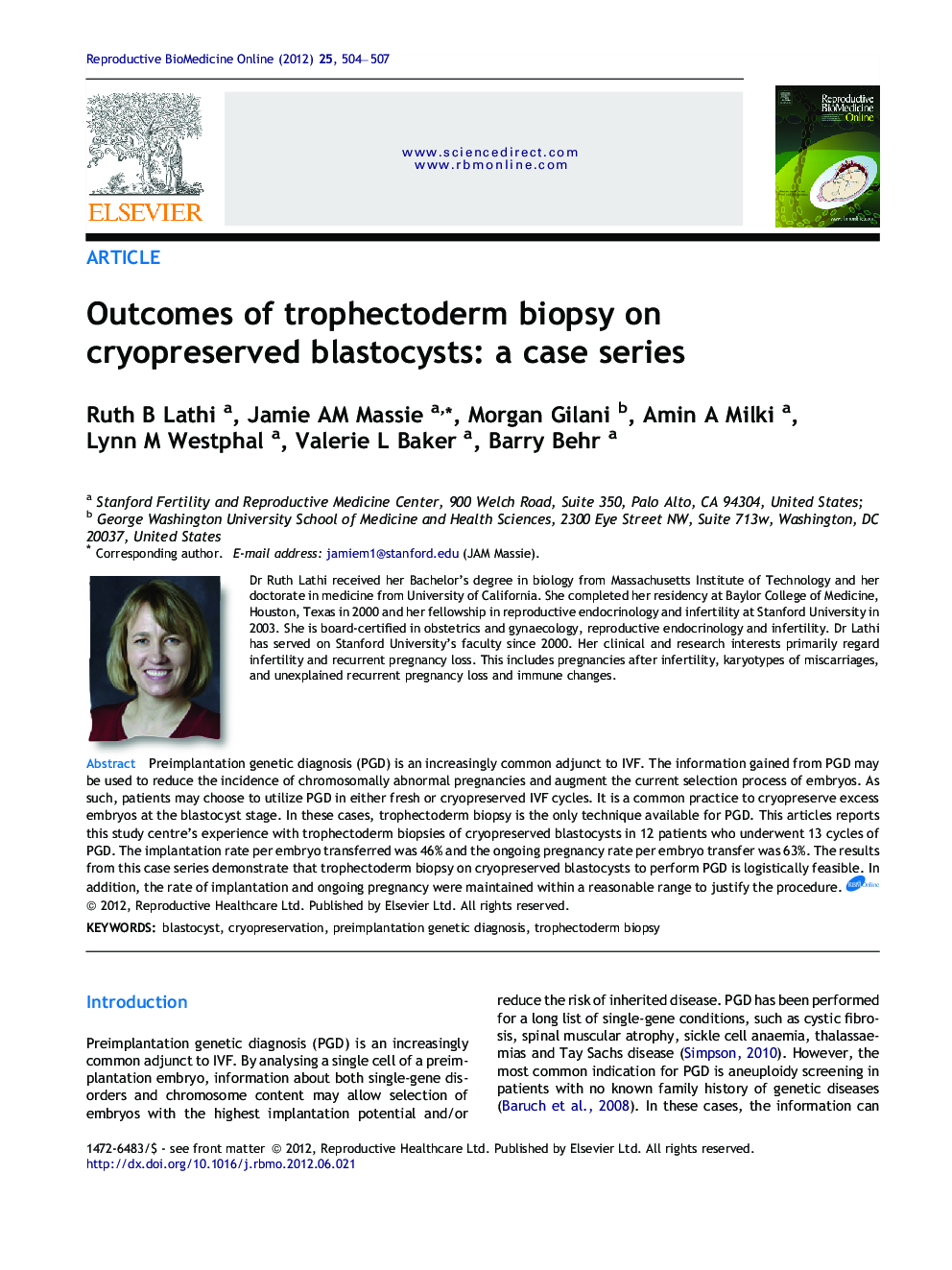| Article ID | Journal | Published Year | Pages | File Type |
|---|---|---|---|---|
| 3970587 | Reproductive BioMedicine Online | 2012 | 4 Pages |
Preimplantation genetic diagnosis (PGD) is an increasingly common adjunct to IVF. The information gained from PGD may be used to reduce the incidence of chromosomally abnormal pregnancies and augment the current selection process of embryos. As such, patients may choose to utilize PGD in either fresh or cryopreserved IVF cycles. It is a common practice to cryopreserve excess embryos at the blastocyst stage. In these cases, trophectoderm biopsy is the only technique available for PGD. This articles reports this study centre’s experience with trophectoderm biopsies of cryopreserved blastocysts in 12 patients who underwent 13 cycles of PGD. The implantation rate per embryo transferred was 46% and the ongoing pregnancy rate per embryo transfer was 63%. The results from this case series demonstrate that trophectoderm biopsy on cryopreserved blastocysts to perform PGD is logistically feasible. In addition, the rate of implantation and ongoing pregnancy were maintained within a reasonable range to justify the procedure.Preimplantation genetic diagnosis (PGD) is an increasingly common adjunct to IVF and is used to evaluate the genetic makeup of the embryo prior to transfer of the embryo into the uterus. The information gained from PGD may be used to identify single-gene disorders that result in genetic disease, reduce the incidence of chromosomally abnormal pregnancies and/or augment the selection process of embryos to be transferred. In order to perform PGD, a biopsy of the embryo is the performed and cells are removed for testing. PGD may be performed in either fresh or frozen (cryopreserved) IVF cycles. Patients who have cryopreserved embryos remaining in storage from a previous fresh cycle may wish to have these embryos tested with PGD. Many embryos are frozen on day 5 of development, referred to as the blastocyst stage. At this stage of development, embryo biopsy is performed via a technique known as ‘trophectoderm biopsy’, in which 1–3 of the cells destined to become the placenta are removed from the embryo for chromosomal testing. We report our experience with trophectoderm biopsy of frozen blastocysts in 12 patients who underwent 13 cycles of PGD. The implantation rate per embryo transferred was 46% and the ongoing pregnancy rate per embryo transfer was 63%. The results from this case series demonstrate that trophectoderm biopsy on cryopreserved blastocysts to perform PGD is logistically feasible. In addition, the rate of implantation and ongoing pregnancy were maintained within a reasonable range to justify the procedure.
